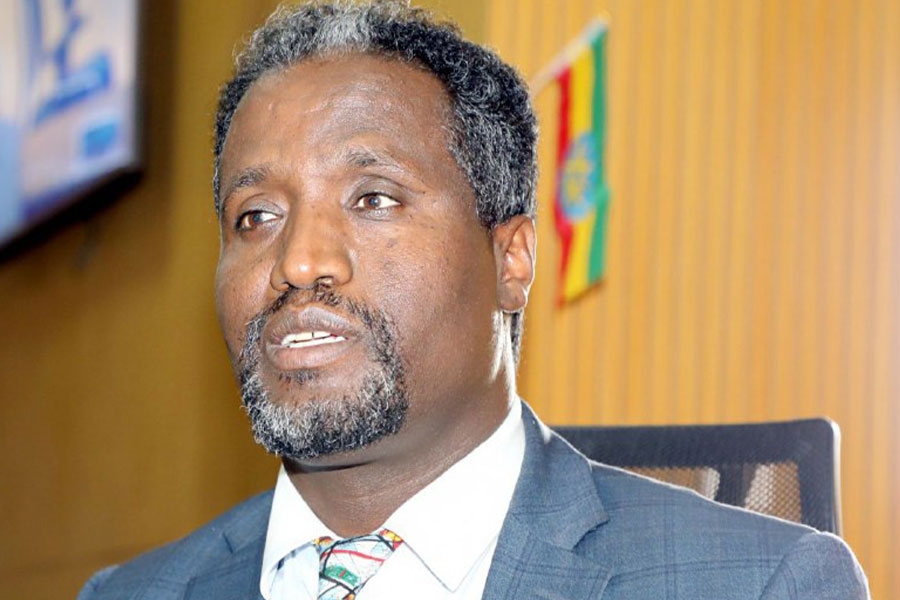
Commentaries | Jan 11,2020
Jul 27 , 2024
By Tesfaye B. Lelissa (PhD)
Ethiopia and the UAE have signed an unprecedented currency swap agreement. The groundbreaking deal is set to redefine economic ties between East Africa and the Middle East, opening up new avenues for financial integration. The countries aim to streamline trade, cut transaction costs, and address exchange rate risks by swapping their local currencies. The theory of comparative advantage is at play here, with each country leveraging its strengths to bolster mutual growth, writes Tesfaye Boru Lelissa (PhD) (teskgbl@gmail.com).
The central banks of Ethiopia and the United Arab Emirates (UAE) have recently established a groundbreaking currency swap agreement, promising to reshape the economic relationships between East Africa and the Middle East. The deal prescribes a nominal value cap of up to three billion Durham (approximately 817 million dollars) and 46 billion Br, marking a pioneering step toward financial integration between the two countries.
The UAE Central Bank and the National Bank of Ethiopia (NBE) also focus on harmonising payment platforms and exploring digital currencies, further strengthening their economic ties.
A currency swap involves the exchange of payments in different currencies between two parties over a predetermined period. Grounded in the theory of comparative advantage developed by economist David Ricardo, this arrangement allows countries to optimise their economic output by specialising in producing goods and services with a comparative advantage and engaging in trade to obtain other goods and services. In this context, the currency swap enables the mutual exchange of local currencies, allowing each country to access the currency it needs more efficiently and at a lower cost.
However, the benefits of this currency swap agreement extend beyond mere currency exchange. It helps address exchange rate fluctuations, a critical concern for businesses and investors engaged in cross-border activities. Introducing a new asset — the swap arrangement — can alter the demand for and supply of different currencies, leading to more stable exchange rates, as suggested by the portfolio balance theory.
The swap can facilitate trade and investment ties between Ethiopia and the UAE by reducing transaction costs and exchange rate risks, encouraging greater participation in bilateral economic activities. Implementing a currency swap agreement can draw insights from the extensive literature on regional monetary cooperation, which shows that such arrangements can strengthen economic and financial integration, promote policy coordination, and enhance resilience to external shocks. This conforms to the theory of optimum currency areas, which suggests that adopting a common currency or establishing currency-pegging arrangements can yield substantial benefits for countries with strong economic ties.
Beyond the currency swap, the central banks of Ethiopia and the UAE aim for deeper financial integration through the harmonisation of payment platforms and joint exploration of digital currencies. Integrating the UAE's UAESWITCH and Ethiopia's ETHSWITCH instant payment systems, national card switches, and messaging platforms will create a more efficient and secure digital payment ecosystem. The initiative demonstrates the shared commitment of both countries to harness the transformative power of financial technology and central bank digital currencies (CBDCs).
By aligning their digital payment systems and pioneering innovative fintech solutions, Ethiopia and the UAE are sailing to redefine the rules of engagement in the regional and global financial ecosystem.
However, the currency swap agreement faces potential issues that should be addressed.
The experiences of other countries, such as the China-Japan and India-Japan currency swap agreements, offer valuable lessons for Ethiopia and the UAE. In both cases, the central banks and regulators faced problems maintaining the appropriate swap size as economic conditions and bilateral priorities evolved. Ethiopia and the UAE should carefully assess factors such as the volume of bilateral trade, investment flows, and potential for future growth to determine the optimal swap size that can effectively support their economic and financial cooperation.
The nominal value thresholds currently set should be reviewed and adjusted over time as the economic relationship between them evolves. This would allow the central banks to adapt to changing market conditions and growing financial and trade linkages.
Ethiopia and the UAE will need to make a crucial decision about the exchange rate mechanism, whether fixed or floating. This decision can align with both countries' broader monetary and financial policies, ensuring coherence and stability. The China-Japan and India-Japan currency swap arrangements have faced problems, illustrating the need for close coordination between their central banks. Extensive bilateral dialogues will be necessary to harmonise exchange rate policies and monetary policy frameworks, facilitating seamless integration of the currency swap agreement.
Regulatory harmonisation and clear operational guidelines will be essential for successfully implementing the agreement. This may involve addressing issues related to capital controls, foreign exchange regulations and integrating the swap facilities with existing payment and settlement systems. Drawing on the experiences of other countries, they can work closely to make their regulatory frameworks compatible, ensuring a coherent and transparent environment for the currency swap arrangement to thrive.
PUBLISHED ON
Jul 27,2024 [ VOL
25 , NO
1265]


Commentaries | Jan 11,2020

Fortune News | Jan 19,2024

Fortune News | Jan 23,2019

Viewpoints | Mar 14,2020

Commentaries | Jan 14,2023

Radar | Jan 07,2023

Radar | Apr 08,2023

Commentaries | Jan 14,2023

Commentaries | Oct 24,2020

Radar | Dec 17,2022

Photo Gallery | 178327 Views | May 06,2019

Photo Gallery | 168528 Views | Apr 26,2019

Photo Gallery | 159312 Views | Oct 06,2021

My Opinion | 137067 Views | Aug 14,2021
Commentaries | Oct 25,2025

Dec 22 , 2024 . By TIZITA SHEWAFERAW
Charged with transforming colossal state-owned enterprises into modern and competitiv...

Aug 18 , 2024 . By AKSAH ITALO
Although predictable Yonas Zerihun's job in the ride-hailing service is not immune to...

Jul 28 , 2024 . By TIZITA SHEWAFERAW
Unhabitual, perhaps too many, Samuel Gebreyohannes, 38, used to occasionally enjoy a couple of beers at breakfast. However, he recently swit...

Jul 13 , 2024 . By AKSAH ITALO
Investors who rely on tractors, trucks, and field vehicles for commuting, transporting commodities, and f...

Oct 25 , 2025
The regulatory machinery is on overdrive. In only two years, no fewer than 35 new pro...

Oct 18 , 2025
The political establishment, notably the ruling party and its top brass, has become p...

Oct 11 , 2025
Ladislas Farago, a roving Associated Press (AP) correspondent, arrived in Ethiopia in...

Oct 4 , 2025
Eyob Tekalegn (PhD) had been in the Governor's chair for only weeks when, on Septembe...

Oct 25 , 2025 . By YITBAREK GETACHEW
Officials of the Addis Abeba's Education Bureau have embarked on an ambitious experim...

Oct 26 , 2025 . By YITBAREK GETACHEW
The federal government is making a landmark shift in its investment incentive regime...

Oct 29 , 2025 . By NAHOM AYELE
The National Bank of Ethiopia (NBE) is preparing to issue a directive that will funda...

Oct 26 , 2025 . By SURAFEL MULUGETA
A community of booksellers shadowing the Ethiopian National Theatre has been jolted b...